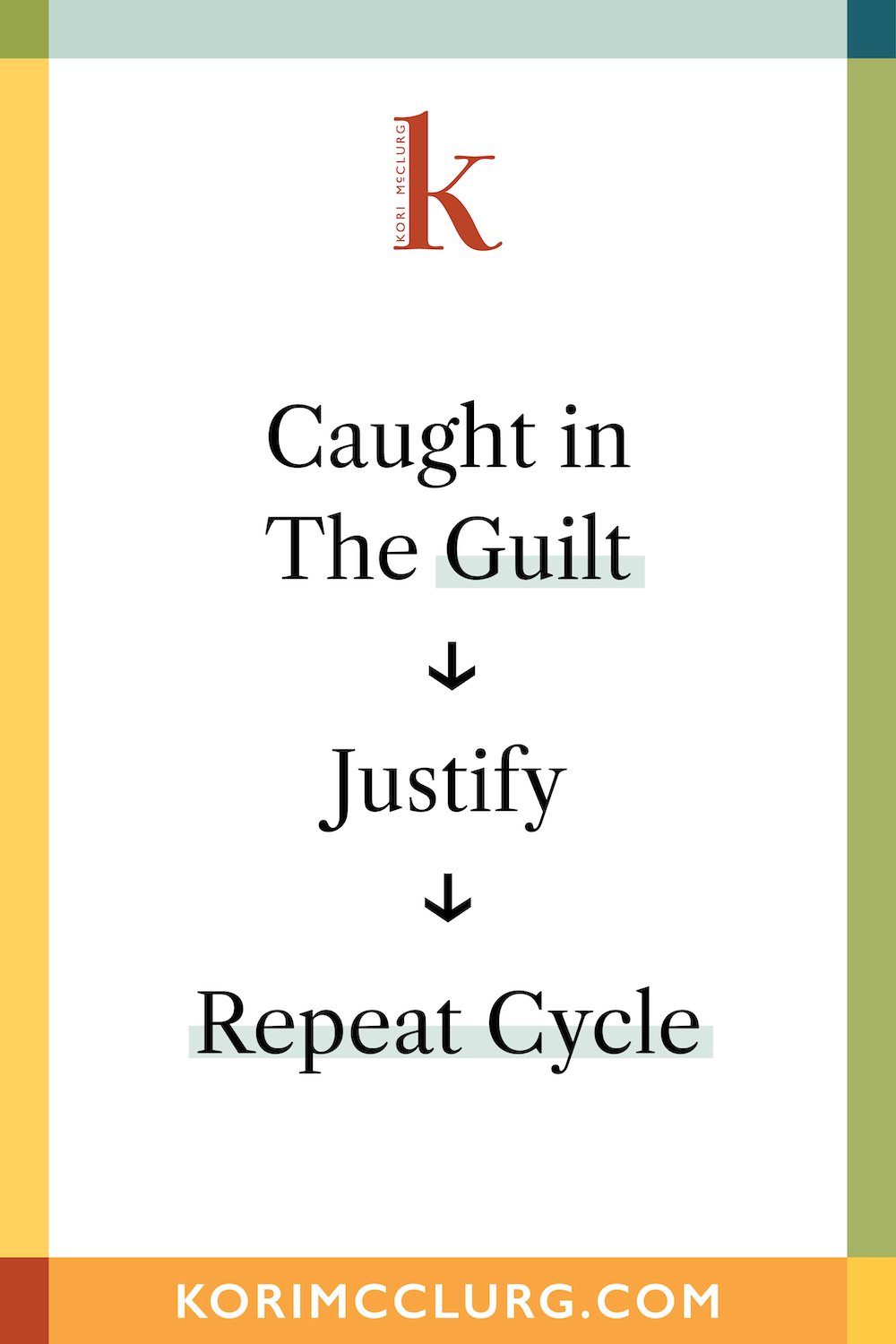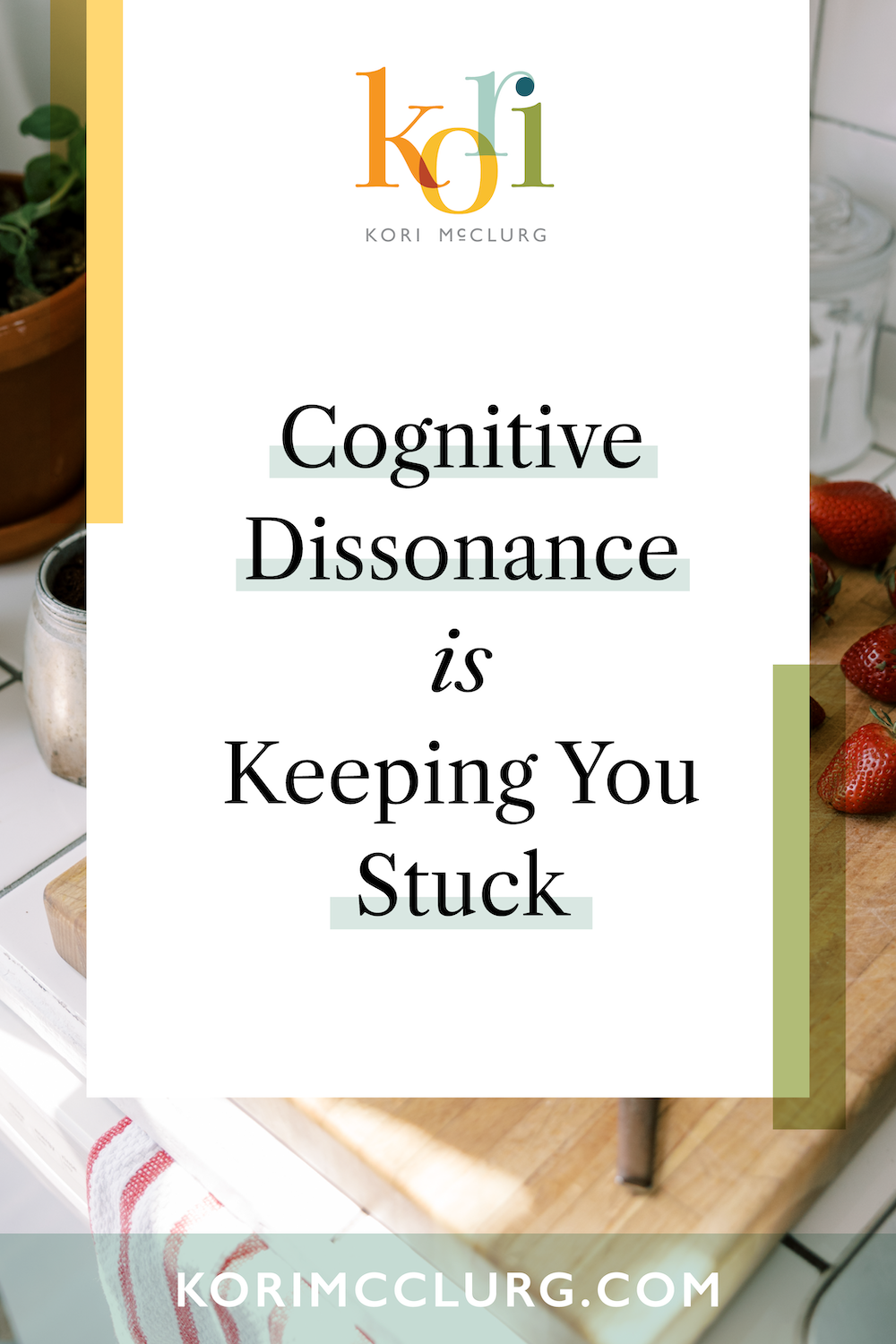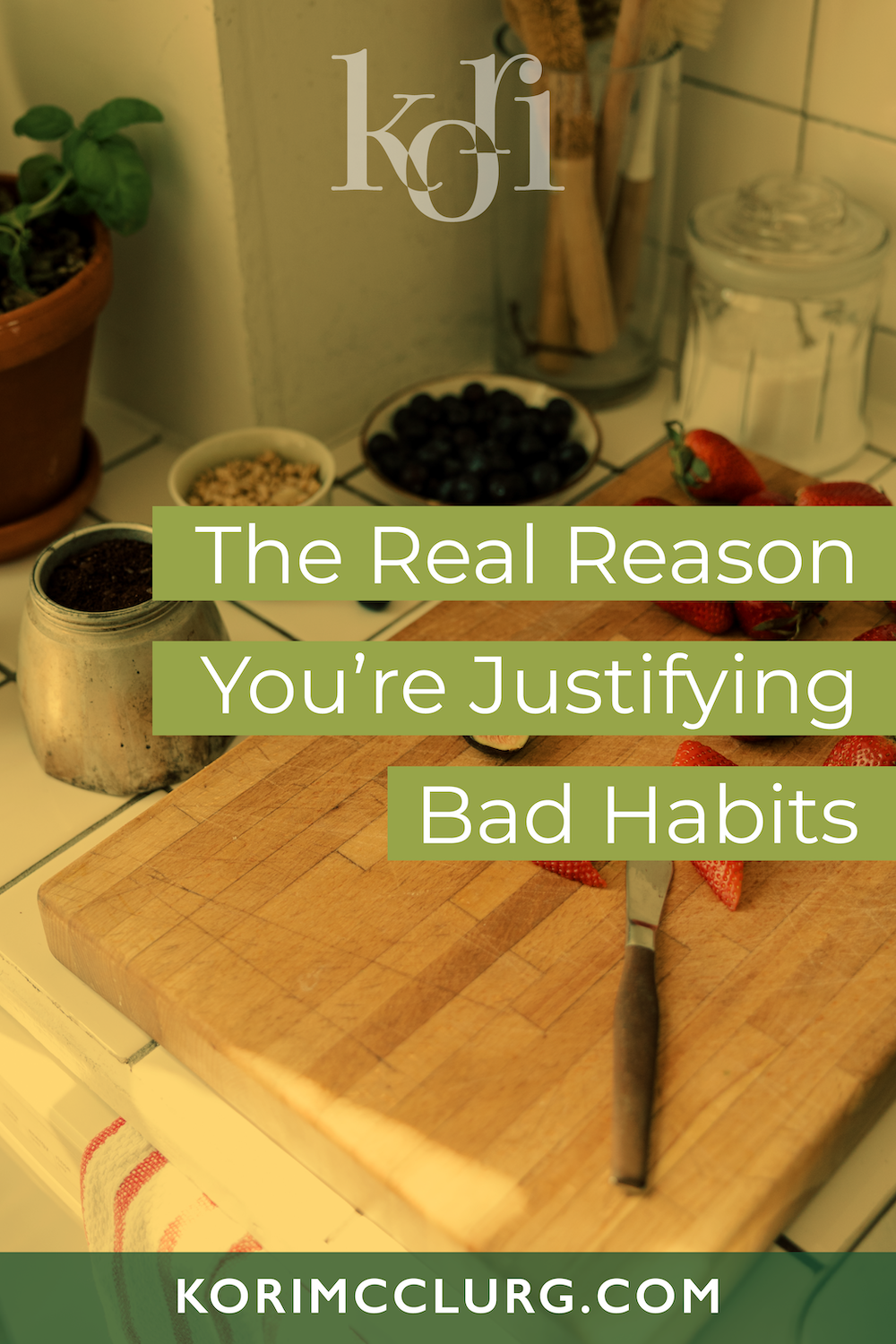Have you ever found yourself justifying a behavior that deep down you know isn’t in alignment with your values? Maybe you’ve yelled at your kids, overindulged in food or drink, or procrastinated on something you knew was important, only to immediately come up with a reason for your actions—one that somehow makes you feel better about them?
If so, you’ve likely experienced what’s called “cognitive dissonance”. It’s a powerful psychological phenomenon that can explain why we sometimes act in ways that are contrary to what we truly believe or value. Understanding this concept can give us insight into why we do the things we do. And, more importantly, how we can break free from self-justifying behaviors that keep us stuck.
What is Cognitive Dissonance?
Cognitive dissonance is a term coined by psychologist Leon Festinger in the 1950s to describe the mental discomfort we feel when our beliefs, attitudes, or values are in conflict with our behaviors. For example, when we act in a way that doesn’t match what we know is right, we experience a sense of discomfort. To resolve this discomfort, our brains work overtime to justify the behavior, often creating rationalizations that help us feel more at ease with our choices.
This instinctive need to justify ourselves is something we all experience, and it happens so quickly and automatically that we might not even realize it’s happening. Cognitive dissonance explains why we sometimes ignore the disconnect between our actions and our values. Because the brain wants to avoid the discomfort that arises from holding contradictory beliefs.
The Brain Science Behind Cognitive Dissonance
To better understand cognitive dissonance, let’s first take a look at some fascinating research conducted by neuroscientist, Michael Gazzaniga. In the 1960s, Gazzaniga worked with patients whose brain hemispheres had been surgically separated to treat severe epilepsy. These patients, known as “split-brain patients,” provided a unique opportunity to study how the two hemispheres of the brain function separately.
Prior to Gazzaniga’s work, it was already known that the two hemispheres of the brain have distinct roles. For example, the left hemisphere is largely responsible for verbal processing (like speaking and understanding language). The right hemisphere handles spatial and visual processing (such as recognizing faces and navigating spaces).
In his experiments, Gazzaniga would present images or words to just one eye of a patient, which would send the visual information to just one hemisphere of the brain. When a word like “face” was shown to the right eye, the patient could say the word aloud because the left hemisphere, responsible for verbal processing, had received the information. However, when the word “face” was shown to the left eye (processed by the right hemisphere), the patient couldn’t verbalize it but could draw a face, because the right hemisphere handled spatial recognition.
Here’s the kicker: when the patient was asked why they drew a face, they would often come up with a completely fabricated reason, such as, “Well, what do you want? A sad face? Who wants a sad face around?” This wasn’t an intentional lie, but rather a quick mental justification to resolve the cognitive dissonance they felt from not being able to explain the behavior.
This fascinating phenomenon—where the brain makes up explanations for its actions to avoid the discomfort of contradictory thoughts—reveals how deeply ingrained the desire to justify ourselves is. We all engage in this kind of rationalization, often without even realizing it.
Cognitive Dissonance in Everyday Life
In everyday life, cognitive dissonance can show up in many ways. Let’s say, for example, you value healthy living and prioritize your well-being. But you find yourself binging, eating crappy food, or drinking alcohol on more occasions than you’d like to admit.
On some level, you might feel the conflict between your actions and your values. This can lead to a sense of discomfort. Rather than face this discomfort, your brain immediately jumps in with justifications:
– “I’ve been working hard all week, I deserve this.”
– “Everyone else is doing it, so it’s not a big deal.”
– “I’ll get back on track tomorrow.”
These justifications help you feel more comfortable about your behavior and resolve the internal tension, at least temporarily. But the truth is, the discomfort doesn’t fully go away. If the behavior continues, the cognitive dissonance persists, creating a cycle of self-justification and internal conflict.
This can also show up in relationships. For example, if you find yourself yelling at your kids even though you know it’s not helpful, your brain will likely create a rationalization like, “I have to be tough with them or they won’t learn,” or “I’m just doing this because I love them and want them to succeed.” The discomfort you feel from acting in a way that’s not in line with your values (like peaceful parenting) is temporarily soothed by these justifications, but the internal conflict remains.
How to Break Free
So, how can we start to address cognitive dissonance in our lives and break free from the cycle of self-justification? The first step is awareness. Recognizing when cognitive dissonance is at play allows us to become more conscious of the justifications we make for our behavior.
Here’s a simple framework to start working through this:
1. Notice the Discomfort: When you’re doing something that’s out of alignment with your values, pay attention to the discomfort it causes. This could manifest as a physical feeling—tightness in your chest, a knot in your stomach, or even a feeling of frustration.
2. Pause and Reflect: Instead of justifying the behavior right away, pause and ask yourself why you’re doing it. Are you really being true to your values? What’s the real reason behind your actions? Or if it’s too late and you’ve already reacted and created the justification, recognizing that you’ve done it is a huge step. Reflect on what you told your self in the justification.
3. Question Your Justifications: This is where you bring some critical thinking into the equation. For example, ask yourself questions like:
Is it really true that yelling at my kids is helpful?
Does this behavior align with my values of health and well-being?
Could there be a different way to approach this that would feel better in the long run?
4. Align Actions with Values: If we could all just wave a wand and start acting in alignment with our values, we wouldn’t be having this discussion. But, after you’ve questioned your justification, start looking at the ways that those justifications are not true. For example, if you are sure that alcohol relaxes you, look at all the ways that it does not relax you. Is it relaxing to feel like crap from a hangover?
5. Seek Support: Coaching is helpful – that’s why people do it. Help yourself get out of your own way by getting support.
Final Thoughts
Cognitive dissonance is a fascinating and powerful force that influences how we think and behave. While it can help us justify our actions in the short term, it can also keep us stuck in patterns that don’t serve us. By becoming aware of cognitive dissonance and using tools like reflection and self-inquiry, we can begin to challenge these justifications and take steps toward living more authentically.
Remember, the key is not to beat yourself up when you catch yourself justifying your behavior, but to approach it with curiosity and a willingness to align your actions with what you truly value. By doing so, you can break free from the cycle of cognitive dissonance and move toward a life of greater authenticity and fulfillment.
I hope you found this exploration of cognitive dissonance useful. If you’re interested in diving deeper into this topic, there are many great resources on YouTube and other platforms that break it down even further.
Andy Luttrell has a great video further explaining Cognitive Dissonance. I recommend checking it out…
I also covered cognitive dissonance in an episode of my Get Out of Your Own Way podcast below.
If you liked this post, we think you should read these too:
- What If You Fly? Reclaiming Your Relationship with Alcohol, Food, and Identity
- How to Be the First in Your Circle to Get Healthy (Without Losing Your Mind or Your Friends)
- The Undeniable Key to Better Health: Sleep
Save for later—Pin This Post!





November 8, 2024
All content ©Kori McClurg 2025
Branding & Site Design by Moriah Riona Branding
All content ©Kori McClurg 2025